Venti and Paimon: The Truth Behind the Time and Wind
Everyone's mind should be full of question marks after doing the "Time and Wind" quest on the Nameless Island, Mondstadt. In this quest, we will sort out what kind of connection Time and Wind has, what kind of story behind Venti and Paimon, and where will Teyvat's future go. At the same time, this article also has a certain element of conjecture.
Let's start!
To the northeast of Mondstadt, there is a Nameless Island completely unmarked on the map. Here you can draw on one of the most mysterious world quests, "Time and Wind". Directly in front of you is the broken sundial that symbolizes time, and at the end of the quest there is a Eye of Storm that emerges from the middle of the altar and flees next to Thousand Winds Temple. There happens to be another broken sundial here. The quest is done but leaves a trail of questions: What is this quest about?

The first things we saw are two sundials located at Thousand Winds Temple and Nameless Island, which have the same shape, but different words inscribed on them. The sundial at Thousand Winds Temple reads, "Seeds of stories, brought by the winde and cultivated by time." And on Nameless Island it reads, "Stories brought on the wind will bloom into legends in due time."
There was also a Ragged Notebook on the Nameless Island that said, "This place and the Thousand Winds Temple must have something to do with a god of Time. The Anemo Archon also have some sort of connection with this god." The description of the Sacrificial Sword also says, "Anemo brings stories while Time nurtures them."


There are many key messages to be found in this thread: the story takes place more than once, and "Time and Wind" is an important factor in the development of the story. However, the seed of the story here, the Anemo Archon, is this Anemo Archon Barbatos? In the description of the Anemo Statue we see once again the phrase "Seeds brought by the wind will grow over time". It says here that the statues was sculpted in the image of the Anemo Archon. It is also mentioned here that the statue silentlu anticipates the arrival of a noble soul, while the thousand winds of time will soon unfold a new story...

The only one who can resonate with statues in Genshin so far is the Traveler. The Traveler is then most likely the Exalted One, and the story itself. So what is the time for the story to grow?
There are actually a lot of suspicions on this Paimon. Why is it that after calling up the Paimon page, everyone else stops moving as if time has stopped? Usually only Paimon is moving. Why do you have to call up the Paimon page in order to adjust time? Why does Paimon guide the traveler to Mondstadt in the first place? Is it somehow connected to the Anemo Archon? Most of the names of Archons are taken from the 72 Pillars of Solomon. Why is Paimon among these 72? We certainly can't say for sure, but there is a lot of time in her, and she does accompany the travelers at all times, witnessing the grow of the story. However, there are still questions left unanswered: what kind of connection exists between Paimon and Venti? Why are the concepts of Time and Wind so often conflated? What significance do they have for the traveler?
The amazing Ms. Sumida was again the key breakthrough in this issue. She is golden, and every seemingly unadorned word is eventually verified to be true. She also searches for the seeds of the story for the novel, and has been known to talk about how the Traveler and Paimon are the story itself. At one point he also mentions that Traveler and Paimon are like Kino, and with his traveling companion Hermes. This story is most likely based on the light novel "Journey of Kino". "Journey of Kino" is also known as Kino in Japanese katakana, and tells the story of Kino's travels around the world with his talking motorcycle, Hermes. The English spelling of Hermes is also identical to the English word for Hermes. However, the game deliberately uses the translation of Hermes. The name Hermes is again consistent with the magic of ancient Greek mythology. This may be an important official hint to us.
Hermes in ancient Greek mythology could fly around with the agility of a mind and became the bearer of orders and messenger of Zeus. He was also seen as the protector of wayfarers, the god of borders and of travelers crossing them. And these characteristics are also very similar to Paimon. She said she is the god of protection to traveler. Hermes invented the Lyre, and again gave it to Apollo. From then on, Apollo became the god who mastered the art of music. They became brothers and friends in friendship. And the Lyre appeared again in the forest winds, and the Stormterror heard the Lyre of the sky. Sky is the name of the Lyre and the companion of the Anemo Archon. Venti's PV goes on to say, "The Holy Lyre der Himmel was born from the branches of time." Is there a connection between the branches of time and Paimon?
In addition to the similarities between Paimon and Hermes, Venti seems to reference Apollo. In Solomon's 72 Pillars, Barbatos has the image of an archer with a green cap and gray cloak, which forms the appearance of Venti in Genshin Impact. And Apollo from Greek mythology is in charge of music and art, symbolizing an inner part of Venti. The temples hide more of the story behind it. As seen in the story of the Sacrificial Fragments and the Sacrificial Sword, the people of Old Mondstadt built the Thousand Winds Temple to worship, however, not the two demonic gods who fought in Mondstadt, Boreas and Dvalin, but the Master of Time and the Master of the Winds. The first people believed that their archon loved stories and song sheets, and with devout worship they did welcome such a archon, Barbatos. It is mentioned in Vera's Melancholy, the town where Vera was from, was the center of the world of Greek mythology. And in Delphi there was the famous Temple of Apollo and the semicircular theater.

It looks very similar to the appearance of the Thousand Winds Temple, and not far from the Temple of Apollo are the Arcadian peaks, where Hermes was born. Do you all remember who Apollo and Hermes represent? And the ruins that you enter at the end of the Legend of Kaeya quest also happen to be called the Arcadian Ruins.
The entrance to this relic is at the junction of Falcon Coast and Dadaupa Gorge, and Dadaupa means high mountain in Hilichurl language, and mountain and valley are obviously contradictory. Again, we know that Wendy has changed Mondstadt's terrain before, and the odds are that the correlation between these clues is not a coincidence.
The connections between "Time and Wind" are slowly emerging as we dig deeper. However, we still have one question left unanswered: on the two sundials, it is written respectively "Seeds of stories, brought by the winde and cultivated by time." and "Stories brought on the wind will bloom into legends in due time". Why does the story appear twice? One might wonder if it corresponds to the brother and sister, but Venti's voice says to the traveler, "Ah, Traveler, we meet again! What? You don't remember me? Ahaha, well, allow me to join you on your quest once again." It seems that Venti has already had one journey with the current traveler, and the current journey is the second. The second journey also corresponds to a new story. Venti's Lyre represents he secrets born from the branches of time, and Dainsleif has also said, "There are no coincidences in the world, everything is a seed planted in the long past, time is just waiting for it to germinate."
What do the roots of time refer to? The story of the Mitternachts Waltz mentions that even the branch of the tree of time upon which the great and glorious Reman Republic nested would be cut off in the end, such that the nation founded by the other twin child of the wolves might rule. And the Twins of the Wolf appear in the story of Boreal Wolf's Broken Fang, in the legend of the distant world where a she-wolf adopted the great Twins. We find that this legend is that of Romulus and Remus, the twins of Roman mythology, who were raised by wolves. And Romulus killed Remus and founded Rome in his own name. The glorious Reman Republic refers to the world in which Remus founded his country, and is also on a branch of the Tree of Time, however this branch was cut to make way for Romulus's Republic.
The Tree of Time here is very similar in nature to the Tree of Imaginary Numbers in the hoyoverse, where time flows through the trunk and the branches fork out into worlds of infinite possibility, but the other possible worlds are cut off to make way for the only world that exists. This could be what Dainsleif is talking about when he says that time is just waiting for it to sprout. And what does Dainsleif want? His constellation is known as the Snake Ring, and in his description he also mentions the future saving the past. Speculating from this information, Daine is most likely trying to connect the first and last branches of the Tree of Time, which also corresponds to the nodes of his description of the future and the past, thus allowing the future to save the past. It was also mentioned in the 10th volume of Vera's Melancholy that "The past cannot change the future, for the predetermined rules of equilibrium are slightly more powerful than me. But the future, with its infinite possibilities, could save the world."

And what is Venti doing? In the comic we find Venti helping Vennessa by simply playing the Holy Lyre der Himmel to drive the dragon away, but then ends by saying to Vennessa, "May I add your name to the poem?" Since the Holy Lyre der Himmel comes from the branches of Tree of Time, and the bard's poetry records history, does playing the Holy Lyre der Himmel to add poetry mean he's revising the book of time and rewriting history? If the traveler's story happened twice, how relevant is the branch of the Tree of Time behind this? And at the end of the Tree of Time, where does Teyvat's future lead?
In the Windblume Festival episode, Venti looks to the island in the sky and says, "It is people's shared will that brings them onto the same page. And surely, it is the wind of freedom that brought us together. It comes from the end of the journey, the edge of the world, the depths of our heart. It is ceaseless." The shared will of Venti, the Traveler, and Paimon may also be part of the meaning of the Travelers' journey. The beginning of the traveler's story is right across the street from the Nameless Island, the sundial points to an extension of the path, and the sundial engraving reads, "Anemo brings stories." The next step is to wait for the story to grow up during the long journey, under the witness of time.












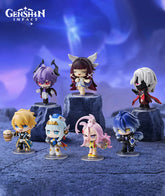



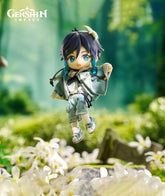
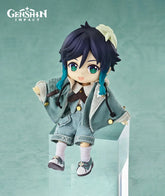
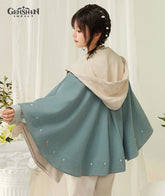
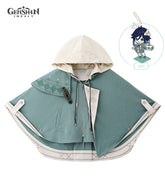




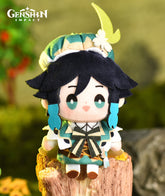
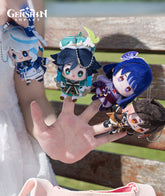


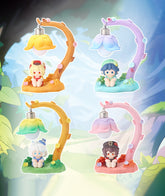
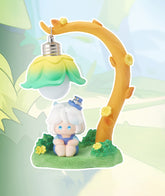
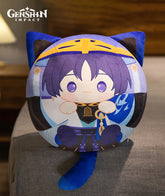
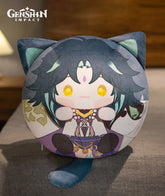


![[Official Merchandise] Genshin Impact Venti Nendoroid Action Figure](http://genshinfans.com/cdn/shop/files/ZT01_f11f1bed-baa3-4fc7-9689-e52ad20b9520_165x.jpg?v=1691668520)
![[Official Merchandise] Genshin Impact Venti Nendoroid Action Figure](http://genshinfans.com/cdn/shop/files/ZT02_713db367-6852-48f2-85bb-fe1ffc8c7630_165x.jpg?v=1691668520)


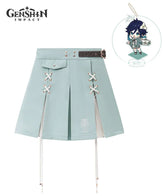

![[Official Merchandise] Genshin Impact Mondstadt OST CD & Accessories Gift Box: City of Winds and Idylls](http://genshinfans.com/cdn/shop/files/01_1077521c-a29e-4e92-9a1e-3f1b552a2115_165x.jpg?v=1698655129)
![[Official Merchandise] Genshin Impact Mondstadt OST CD & Accessories Gift Box: City of Winds and Idylls](http://genshinfans.com/cdn/shop/files/02_6dc159cd-a579-4600-9d57-88587b7c8afc_165x.jpg?v=1698655129)


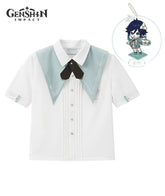
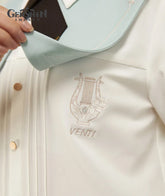
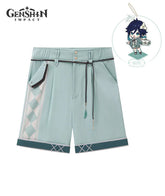

![[Official Merchandise] Teyvat Paradise: Mondstadt Vendi Bennett Characters Plush Dolls](http://genshinfans.com/cdn/shop/products/SKU09_655c8d4e-d291-40f0-9ecd-d4e8b3fe3412_165x.jpg?v=1693559211)
![[Official Merchandise] Genshin Impact Character Art Phone Stand Klee Hu Tao](http://genshinfans.com/cdn/shop/files/05_355cbddb-f5db-4661-b507-1eb072c6d14b_165x.jpg?v=1697005410)
![[Official Merchandise] Genshin Impact Character Art Phone Stand Klee Hu Tao](http://genshinfans.com/cdn/shop/files/02_a8e89369-b3d3-4999-8cb1-0d572ab5c5bf_165x.jpg?v=1697005169)
![[Official Merchandise] Genshin Impact Character Mamekororin Plushie Blind Box](http://genshinfans.com/cdn/shop/products/single-blind-box_165x.jpg?v=1694167275)
![[Official Merchandise] Genshin Impact Character Mamekororin Plushie Blind Box](http://genshinfans.com/cdn/shop/files/zt02_ac1d0b31-7251-447b-9551-bb14011131f5_165x.jpg?v=1694166613)
![[Official Merchandise] Genshin Impact Mondstadt Character Battlefield Hero Blind Box Figurine](http://genshinfans.com/cdn/shop/files/ZT01_cfa3cbdb-174c-465a-8c55-78df09defee6_165x.jpg?v=1691491218)
![[Official Merchandise] Genshin Impact Mondstadt Character Battlefield Hero Blind Box Figurine](http://genshinfans.com/cdn/shop/files/ZT02_bdd276a3-7703-4aaf-af27-2eda9711f581_165x.jpg?v=1691491218)